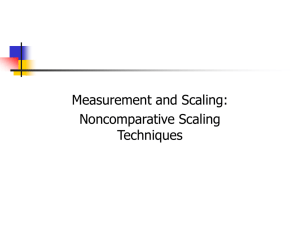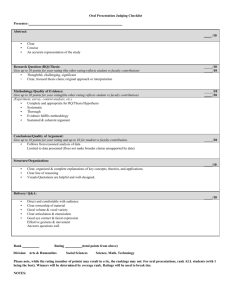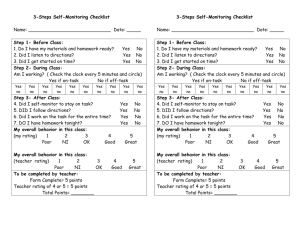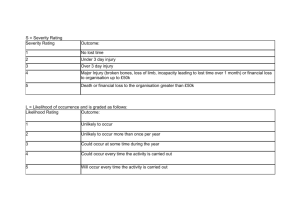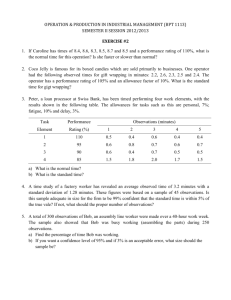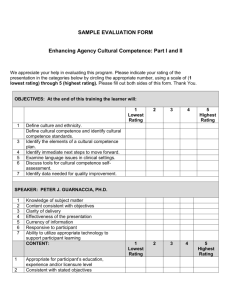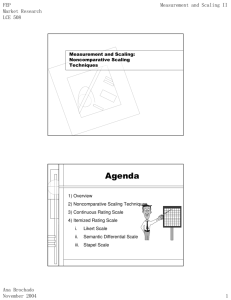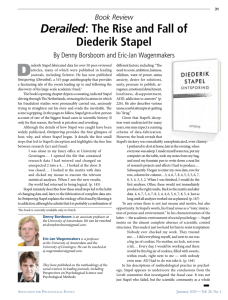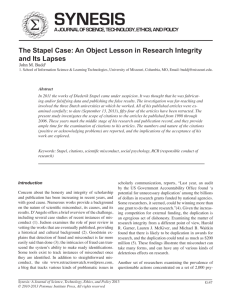Lecture6Exam
advertisement
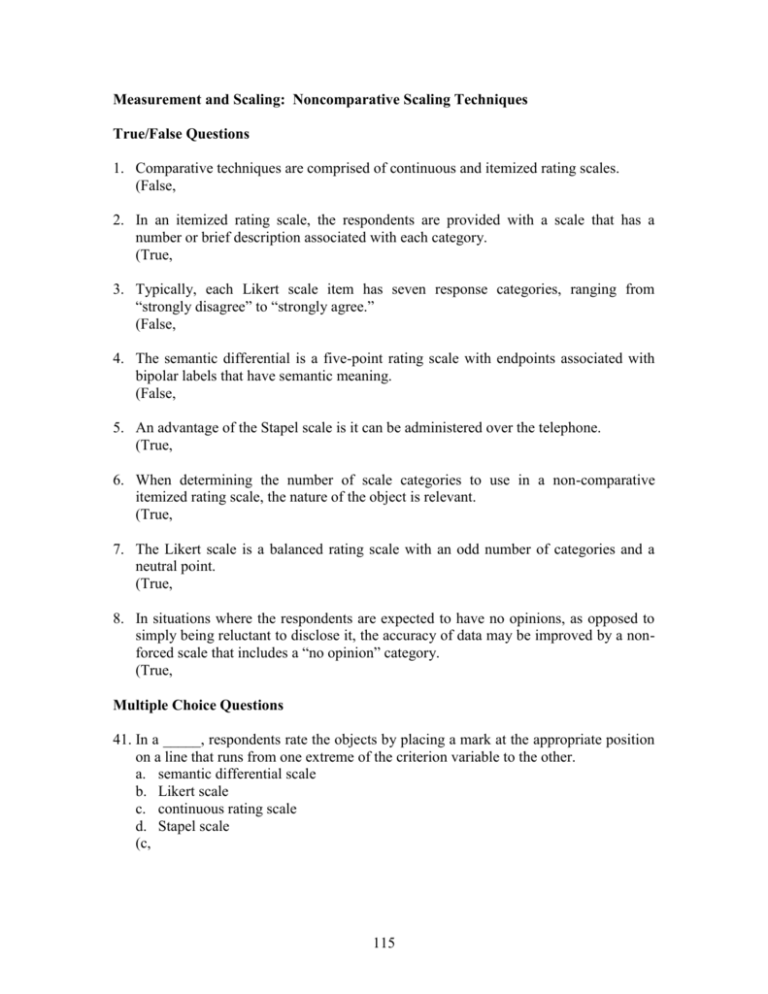
Measurement and Scaling: Noncomparative Scaling Techniques True/False Questions 1. Comparative techniques are comprised of continuous and itemized rating scales. (False, 2. In an itemized rating scale, the respondents are provided with a scale that has a number or brief description associated with each category. (True, 3. Typically, each Likert scale item has seven response categories, ranging from “strongly disagree” to “strongly agree.” (False, 4. The semantic differential is a five-point rating scale with endpoints associated with bipolar labels that have semantic meaning. (False, 5. An advantage of the Stapel scale is it can be administered over the telephone. (True, 6. When determining the number of scale categories to use in a non-comparative itemized rating scale, the nature of the object is relevant. (True, 7. The Likert scale is a balanced rating scale with an odd number of categories and a neutral point. (True, 8. In situations where the respondents are expected to have no opinions, as opposed to simply being reluctant to disclose it, the accuracy of data may be improved by a nonforced scale that includes a “no opinion” category. (True, Multiple Choice Questions 41. In a _____, respondents rate the objects by placing a mark at the appropriate position on a line that runs from one extreme of the criterion variable to the other. a. semantic differential scale b. Likert scale c. continuous rating scale d. Stapel scale (c, 115 42. Scores assigned to continuous rating scales by the researcher are typically treated as _____ data. a. nominal b. ordinal c. ratio d. interval (d, 46. Which scale is not an itemized rating scale? a. Stapel scale b. semantic differential scale c. Likert scale d. continuous rating scale (d, 47. Neither agree Strongly nor Strongly disagree Disagree disagree Agree agree 1. Sears has poor in-store service. 1 2X 3 4 5 2. I like to shop at Sears. 1 2X 3 4 5 The above scale is an example of a _____. a. continuous rating scale b. Stapel scale c. semantic differential scale d. Likert scale (d, 48. Which itemized rating scale takes longer to complete than other itemized rating scales because respondents have to read each statement? a. semantic differential scale b. Likert scale c. continuous rating scale d. Stapel scale (b, 49. Sears is: Powerful —:—:—:—:-X-:—:—: Weak Unreliable —:—:—:—:—:-X-:—: Reliable The above scale is an example of a _____ scale? a. continuous rating scale b. Stapel scale c. semantic differential scale d. Likert scale 116 (c, 58. Which statement is not true when deciding on whether to use an odd or even number of categories when developing a non-comparative itemized rating scale? a. With an odd number of categories, the middle scale position is generally designated neutral or impartial. b. The decision to use an odd or even number of categories depends on whether some of the respondents may be neutral on the response being measured. c. A rating scale with an even number of categories should be used if the researcher wants to force a response. d. All of the above statements are true. (d, 117

